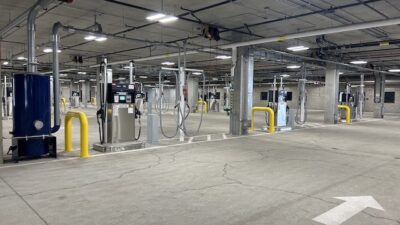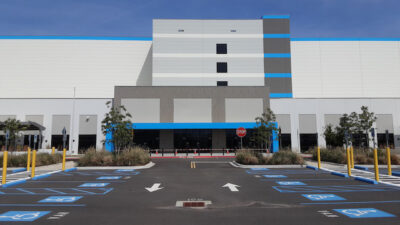Existing, occupied buildings can benefit greatly from the TAB process as well by improving its performance and efficiency.

Testing, adjusting & balancing (TAB) has, for many decades, been an accepted and crucial part of the new construction process for commercial buildings. From small retail stores to schools, large scale office buildings to hospitals and labs, TAB done by a qualified independent agency helps verify that systems are working properly according to the design when owners take occupancy.
But existing, occupied buildings can benefit greatly from the TAB process as well. Over time, changes in building occupancy and usage, equipment aging, repairs, and modifications made (or not made) by operations and maintenance personnel can slowly degrade the performance of a building’s systems. Targeted testing and adjustments where necessary can have a significant positive impact on a building’s performance and efficiency, or in some cases highlight when a complete rebalance may be the wisest course of action.
Because of the many variables involved across so many different types and sizes of buildings, regions, systems, and scopes of work, AABC does not have a standing, published recommendation on whether and how often to do periodic TAB. However, to check on the building’s HVAC performance, AABC recommends the following approach and rationale for building owners interested in considering their options.
AABC recommended periodic TAB audit
To ensure proper and efficient operation of the HVAC and control systems in existing buildings, we offer the following recommendation to building owners and facility managers.
We note that ASHRAE Standard 62.1-2019, Ventilation for Acceptable Indoor Air Quality, Table 8-1, Task ae recommends the following task with a minimum frequency of 5 years:
Verify the total quantity of outdoor air delivered by air handlers set to minimum outdoor air mode. If measured minimum airflow rates are less than the design minimum rate documented in the O&M manual, a ±10 percent balancing tolerance, (1) confirm the measured rate does not conform with the provisions of this standard and (2) adjust or modify the air-handler components to correct the airflow deficiency. Ventilation systems shall be balanced in accordance with ASHRAE Standard 111 or its equivalent, at least to the extent necessary to verify conformance with the total outdoor airflow and space supply airflow requirements of this standard. Exception: Units under 2000 cubic feet per meter (1000 L/s) of supply air are exempt from this requirement.
Based in part on this guidance, we suggest that the list of items below be periodically investigated. If you have a good ongoing maintenance program in each building, we suggest doing so every three years. If you have little or no ongoing maintenance, then consider doing so every year.
(All testing and reporting should follow the ANSI/AABC National Standards for Total System Balance, 7th Edition: https://www.aabc.com/journal):
1. Automatic dampers
- Verify all move freely.
- Verify all seals are intact and clean.
- Verify the building automation system (BAS) controls each properly.
2. Filters
- Inspect all filters for cleanliness and evaluate frequency of replacement.
- Verify filters are the same minimum efficiency reporting value rating as designed.
- Verify the filter racks do not allow air to bypass.
3. Air handler unit (AHU) & exhaust fan systems
- Verify the control sequence for each AHU and exhaust system.
- Verify start and stop sequences.
- Verify interlocks.
- Verify total airflow with pitot traverse.
- Verify minimum and maximum outside airflows.
- Verify relief.
- Verify systemic pressure losses.
- Has any system been changed since the original construction?
4. Cooling system
- Verify start and stop sequences.
- Verify control sequence for each chiller and pump.
- Verify the system isolation valves are functional.
- Verify pressure reducing valve (PRV) and system pressure control is operational.
- Verify system air control is operational.
- Verify system automatic air vents are operational.
- Verify the pressure at the highest point in the system with the pumps off.
5. Cooling tower system
- Verify start and stop sequences.
- Verify control sequence for each condenser and pump.
- Verify the system isolation valves are functional.
- Verify system fill and pressure equalization control are operational.
6. Heating systems
- Verify start and stop sequences.
- Verify control sequence for each boiler and pump.
- Verify the system isolation valves are functional.
- Verify PRV and system pressure control is operational.
- Verify system air control is operational.
- Verify system automatic air vents are operational.
- Verify the pressure at the highest point in the system with the pumps off.
7. With all exhaust and supply systems operating at both minimum and maximum setpoints, verify the building pressurization.
8. Verify the calibration of each BAS sensor (temperature, humidity, pressure, CO2and motor sensors).
9. Spot-check operation of variable air volume terminal boxes across design operating range.
10. Submit a report of all tests.
This article originally appeared on the Associated Air Balance Council (AABC) TAB Journal. AABC is a CFE Media content partner.



